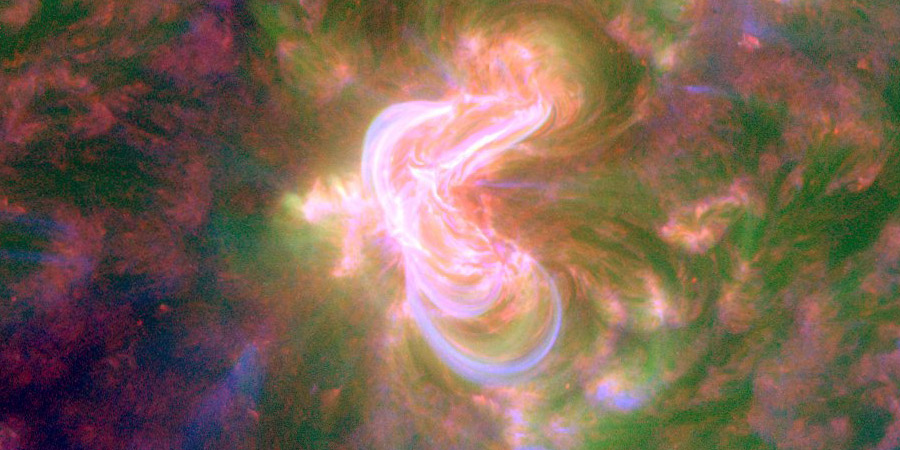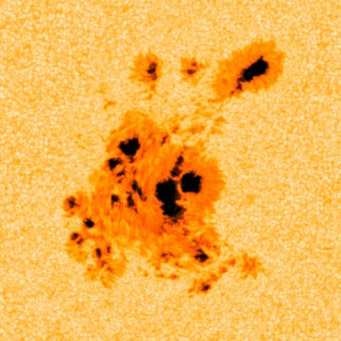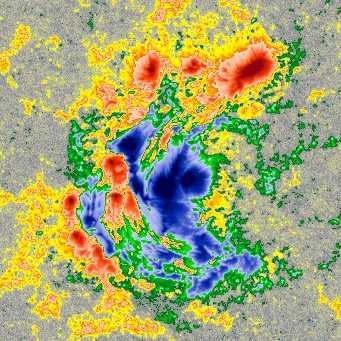M-class solar flares, Sunspot region 2673
Monday, 4 September 2017 16:35 UTC

It has been a long time since a sunspot region managed to get us really excited but earth-facing sunspot region 2673 has succeeded in doing just that. Be sure to keep on reading why you should be getting excited as well!
M-class solar flares
First things first: if you follow us on Twitter or are subscribed to our push alerts you likely already know this but this night the Sun produced a small M-class solar flare. The solar flare peaked at M1.27 (R1-minor) around 05:49 UTC. Sunspot region 2673 was the culprit and that doesn't come as a surprise as you will find out soon. Sunspot region 2673 is facing Earth at the moment so the big question is of course: did this event launch a coronal mass ejection? The answer is no. There are currently no earth-directed coronal mass ejections to be seen on SOHO/LASCO imagery.
As we were writing the above text, another M-class solar flare took place. An impulsive M1.5 solar flare peaked at 15:30 UTC, again from sunspot region 2673. The flare's impulsive nature means it is very unlikely to launch a coronal mass ejection.
Note: there are currently no recent SDO/AIA images available from the SDO website. The AIA images on their website have been stuck since yesterday for some reason. We do not know the cause and hope the issue will be fixed soon. Our automated flare detection system on Twitter uses these images so keep this in mind that the flare detection image might be outdated. SDO/HMI images are not affected.
Sunspot region 2673
Today's attention goes for a full 100% to sunspot region 2673. This sunspot region has been growing at a truly spectacular rate. The region consisted of just one single sunspot only 48 hours ago but has now grown to a complex Beta-Gamma-Delta sunspot region which harbors energy for a big solar flare.


⇧ NASA/SDO HMI imagery showing complex sunspot region 2673 in visible lights (left) and magnetogram (right)
On the images above we see sunspot region 2673 in great detail thanks to NASA's SDO space craft. There are a bunch of small spots surrounding the main leader spot and if we take a look at the magnetogram we see that a whole bunch of these spots are of opposite polarity. All of these spots are connected with each other meaning we are looking at a mix of compact delta structures. It has been a long time that we've seen such a promising sunspot region and more low-level M-class solar flares (R1-minor) are almost a certainty. If the current magnetic complexity persists we might even see a high-level M-class solar flare (R2-moderate) or dare we say it: a low-level X-class (R3-strong) solar flare. No guarantees, we are still in solar cycle 24 but there is a bunch of potential in this sunspot region!
Thank you for reading this article! Did you have any trouble with the technical terms used in this article? Our help section is the place to be where you can find in-depth articles, a FAQ and a list with common abbreviations. Still puzzled? Just post on our forum where we will help you the best we can!
Latest news
Latest forum messages
Support SpaceWeatherLive.com!
A lot of people come to SpaceWeatherLive to follow the Sun's activity or if there is aurora to be seen, but with more traffic comes higher server costs. Consider a donation if you enjoy SpaceWeatherLive so we can keep the website online!

Space weather facts
| Last X-flare | 2025/03/28 | X1.1 |
| Last M-flare | 2025/04/30 | M1.9 |
| Last geomagnetic storm | 2025/04/21 | Kp5+ (G1) |
| Spotless days | |
|---|---|
| Last spotless day | 2022/06/08 |
| Monthly mean Sunspot Number | |
|---|---|
| March 2025 | 134.2 -20.4 |
| April 2025 | 125.7 -8.5 |
| Last 30 days | 126.6 -0.4 |


